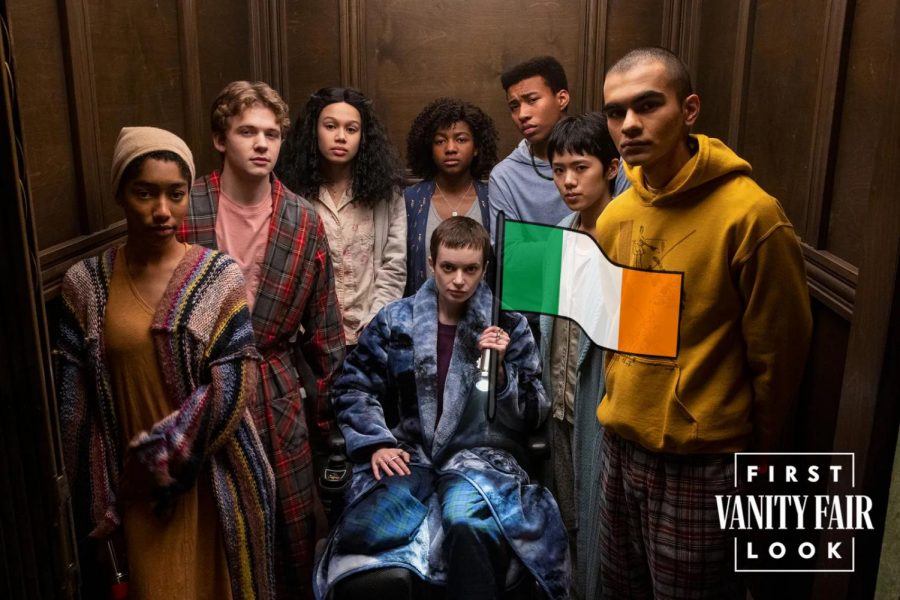A (Brutally) Honest Review of Netflix’s The Midnight Club
In 2022, competition in network television is more cut-throat than ever. Companies like Amazon, Hulu, HBO, Showtime, and Disney have been giving Netflix a run for its money since it previously controlled the subscription-based entertainment industry. For these networks, media that isn’t exclusive to their brand is put under a contract, securing movies and shows for only a few months at a time. Notably, this commodity has prompted streaming services to come up with an alternative, Originals. Netflix Original series like Stranger Things, Dahmer, and even movies like A Marriage Story have been wildly successful, generating millions of dollars in revenue; yet, newer Netflix Originals are proof of a decline in the quality of streaming-service productions. To most Netflix viewers, this range of watchability isn’t necessarily new, however, the line that distinguishes flicks like The Kissing Booth and Tall Girl from Oscar winners like The Irishman is becoming increasingly blurry. Shows that market themselves as dramatic and deep seem to end up with tacky dialogue and stereotypical characters, and one of Netflix’s newest additions, The Midnight Club, is no exception to this decline.
I was first introduced to The Midnight Club by my parents, which should’ve been my first red flag. My parents and I opted to watch the show together and thus began one of one-too-many hours in the ten-episode series. Without giving away too much, the introduction is fairly quick. Episode one starts with an introduction to the main character, Ilanka – a scholarly, promising youngster – who, after preparing her valedictorian graduation speech, is on her way to attend a party. Despite being completely sober, Ilanka commits the ultimate party foul and upchucks–but this isn’t just any doozy, she’s throwing up blood! So, in the normal progression of such events, the scene transitions to a view of Ilanka in the hospital subtitled “One Year Later.” Turns out, Ilanka has been fighting thyroid cancer. Within the first 10 minutes, the show breaches the span of a year with relatively little information to cover the gaps. Regardless, Ilanka is presented with her 18th birthday cake, and upon pretending to blow out candles (open flame isn’t permitted in hospitals), she rehashes an enlightened perspective on her current situation.
Not even moments after completing her philosophical speech, Ilanka changes subjects to her birthday wish: which, of course, is to spend a year at an old Victorian hospice mansion with a bunch of other cancerous kids. Honestly, what more could someone in her position possibly ask for? It’s practically every teen’s dream! But seriously, it’s as if the writers got together and all agreed that the possibility of Ilanka wanting to get a new phone, or something, you know, normal, was totally unreasonable and that she is condemned to cancerous misery in every facet of her life. Regardless, about a minute of negotiation ensues, Ilanka gives her foster dad the classic “I’m not a little girl anymore” roundup. If you’re a little lost on the parental situation here, don’t worry, the show doesn’t expand upon this or the relevance of Ilanka’s birth parents whatsoever. You’ll notice this sort of thing throughout the season; there’s a strange emphasis on seemingly random things that are never further explored or defined.
Anyways, foster dad and Ilanka drive up to the coastal hospice mansion. Upon arriving, Ilanka exchanges some cringey” anecdotes as a means of introduction to her fellow cancerous youngsters. Shortly thereafter, Ilanka dismisses foster dad, waving him goodbye from the front porch as if she’s been there for months–a regular, if you will. From here, we meet the other characters, who are really just stereotypical teens with the personality of a piece of paper. Ultimately, it seems the writers try to dismiss this stint by assigning them all various cancers as if that somehow overrides their tackiness; instead, the character’s utter lack of depth paired with cancer really just creates a crude simplification of kids that actually face these things.
There’s Amesh, the geeky gamer. There’s Kevin, the charming guy who seems like he just got dealt a bad hand. There’s Natsuki, Amesh’s geeky female counterpart. There’s Spencer, who offers representation for the LGBTQ+ community, and also happens to have AIDS. If you haven’t caught on to the writer’s utter lack of empathy and relatability, this is the perfect, most glaringly obvious example. There’s Sandra, a naive and frustratingly optimistic evangelist. There’s Cheri, a rich girl with a knack for lying, and then my personal favorite: Anya, a wet blanket of an Irish lassie whose main objective is to remind everyone that they’re going to die. She’s a delight. The lack of depth to these characters really just drives home how out of touch the writers are, and creates an aura of ignorance, defeating whatever the intended deeper meaning was.
Essentially, the premise of each episode begins with either group therapy or another dreary reminder that the kids are sick and transitions into nighttime, wherein the show’s namesake takes place, The Midnight Club.
The oh-so-cleverly named club follows a nightly pattern of that group sneaking out of their rooms–at, you guessed it, midnight–to gather in the mansion’s library. Here, they take turns telling each other spooky campfire-esque stories. If these pointless, cheesy stories don’t get you shaking in your boots, there’s always a highly predictable jumpscare either before or after each meeting to round things off. A perfect example of this structure takes place one night while Ilanka is using the ensuite bathroom she shares with her roommate, Irish Anya. Just for reference, I personally refer to her as “Irish Anya” because her entire personality seems to revolve around Irish stereotypes. So, Ilanka’s washing her face when suddenly she hears a rustle from outside the bathroom which prompts Ilanka to take on further investigation. Ilanka peeks into her bedroom, only to find a demonic granny staring down her sleeping roommate, Irish Anya! Oy!
While this whole segment is creepy in theory, the camera stays on grandma for a good 40 seconds- which, in my opinion, is enough time to spot and separate special effect applications, which really just reminds viewers that the whole thing is a staged production.
*Spoiler warning*, though this bit reveals little about the overall plot. Anyhow, the demonic granny exits the bedroom with the vigor of a snail; and unfortunately, it seems Ilanka is forced to adhere to what I can only conclude must be some sort of ghost etiquette, as she remains utterly still for approximately one minute before deciding to pursue the demonic hag. This raises a few concerns for me, one being that Ilanka waits for her window of opportunity to close before pursuing grams, and the second that Ilanka is choosing to follow the demonic entity. This shindig ends with Ilanka realizing she was sleepwalking, and the grandma’s identity is never breached for the remainder of the season despite multiple appearances. The whole thing is basically blown off when Ilanka comes to, which just happens to be in the library, right on time for a Midnight Club meeting. Logically, Ilanka ponders this entire series of red flags for approximately half a second before resuming her evening without a care. Compared to the contemplation expressed when surprised by the demon grandma, Ilanka’s lack of analysis here just draws her priorities into question for me. The episode ends with what I suppose is supposed to be a “scary” story about time travel and a plethora of unanswered questions.
Each episode falls into a similarly predictable pattern, the only redemption being intermittent snarky comments from Irish Anya.
Even with all the aforementioned oddities, I want to return to what I found to be one of the strangest aspects of the show: cancer. I mean, there’s no shortage of reasons for a group of kids to be confined to an area for a period of time; I find it incredibly odd and kind of pointlessly bleak that writers chose childhood cancer, of all things, as the connecting factor between a group of teens. It’s bad enough having a bunch of young people who have never had cancer try to act like a young person with cancer, with the inclusion of dually cancerous and Irish Anya to remind us that the struggle of being Irish and PO’d is almost, if not, equally as bad as cancer anyways. What I’m really trying to say- the bad acting comes across as ignorant and a little disrespectful.
While the many dreadful aspects of each episode seem to compile into an even worse season, I’ve got to say that I ended up really enjoying it- just not in the way it was intended to be enjoyed. As a matter of fact, I’d recommend The Midnight Club to anyone in search of a time killer. Maybe that’s why all these networks’ “Originals,” tend to do so well; they’re so awful that they’re actually good. Ultimately, on a genuine scale, this show gets 2 stars from me; but on my personal scale? 5/5. The Midnight Club will thoroughly disappoint if you’re looking for something to follow The Haunting of Hill House or a similar series, but I highly recommend staging a viewing party purely for the array of audience facial expressions that’ll follow each questionable dialogue choice. Conclusively, my final thoughts on this series are: watch the show. It’s terrible.







